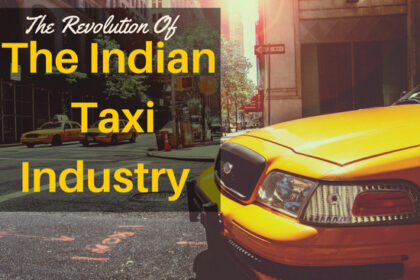
Think about the last time you stepped out of the airport and hailed a local taxi – the typical yellow taxis that have been running across cities helping people reach the local market, a friend’s place or even their office.
Can’t remember, right?
In the early 80s, tourist taxis came into existence with the introduction of tourist taxi permits. While initially you could only see certain models of vehicles used as taxis, today, almost every vehicle’s economy model can be seen running as a taxi in the city.
The auto segment of vehicles picked up in the travel industry for in-city travel in the late 80s. But it was in the early 90s, that Bajaj Autos introduced full economic and better versions of autos in the market.
If you look at the whole picture, Indian tourist taxis were traditionally meant for inter city travel and autos were used for in-city travel. The yellow taxies were seen being used only in the bigger metropolitan cities like Mumbai.
Looking around now, you can clearly see that the taxi industry has grown exponentially over time.
The revolution of the taxi industry
Cab aggregators, earlier known as Call Taxis or Radio Taxis, started out in early 2000s. They ran with several operators across cities and you can see some of them still up and running efficiently.
Post this period, the taxi industry saw a steady rise of businesses that offered their customers cabs on demand. Here’s a quick rundown of some of the names that we still see around us:
- Mega Cabs – Founded in 2002 ; Presently operating in six cities
- Easy Cabs – Founded in 2000 ; Presently operating in four cities
- Fast Track – Founded in 2001 ; Presently operating in forty two cities
These services started on a pretty simple model – you would call their call center to book a cab at standard fixed prices and you would receive proper bills at the end of a ride. The taxis were tracked through radio which provided a sense of security to the customers.
For safety and efficiency purposes, they provide the details of the vehicle via SMS to the customer – from the driver’s name, to the vehicle type and number.
Then came Meru
Introduction of online cab bookings
Meru Cabs entered the industry in 2007 and changed the industry by introducing automatic printed bills, credit card payments, cab booking through website, etc. The company expanded into 23 cities quickly, operating through their own vehicles which were then licensed to drivers.
“The preset meters introduced by the likes of these radio taxis, have removed the negotiation from the taxi industry.”
But what comes additionally, is the preset meter that removes the negotiation angle for anyone booking a cab. This solved a major concern of customers being overcharged for intercity travel.
The same period also saw pre booking of autos and taxi counters, particularly at airports and railway stations. They enables customers to fix their travel rates based on the area they wanted to go to, keeping in mind the driver’s convenience as well. This pricing mechanism here involved charging for the kilometers that a taxi rides to.
With the advent of radio cabs, the new service providers started charging for only the distance covered one-way, reducing the cost of booking cabs for frequent travels. The change drove up the consumption and usage of these taxi providers drastically
As per industry estimates, about 1.6 million vehicles are licensed to run as cabs in India today. The organised cab sector accounts for a mere 4-5% of this and presently totals to about 5,000 crores in revenue. It has been growing at a whopping rate of 25% annually and is expected to reach around 45,000 crores in the next ten years.
Surprised by the expanse of the taxi industry? There’s more.
Smartphones and the taxi industry
The growth in smartphones and apps have revolutionised the taxi industry further, making it easier for customers to book cabs to any destination – within the city or outside of it.
The key players that brought in this industry changing trend are:
- Ola Cabs – Founded in 2010 – Presently active in 100 cities, the company lets customer book cabs only through their app. With a funding of $700 million, the company is growing at an exponential rate.
- Taxi for Sure – While they started as a separate company that allowed customers to book cabs on-the-go via an app, it has been taken over by Ola.
- Uber – Founded in San Francisco in 2009, the company is active in almost 100 cities in India. With a funding of $6 billion,
- The three operators have been aggressively chasing the biggest resource in the taxi industry – the drivers; and are expanding at a rapid pace since the last one year.
The strategies that make app based taxi vendors work
If you’re wondering about how these app based taxi vendors are making their mark in the taxi industry, let’s give you a breakdown of their strategies from different stakeholder perspectives.
The driver’s perspective
1. Availability of vehicles and drivers
None of the app based service providers have their own vehicles. This makes it important for them to ensure that maximum number of vehicles are registered with them as drivers. That’s exactly why Ola and Uber aggressively pushed signing up of drivers by offering very high incentives, before launching in a city. These incentives went up to INR 2,000 a day for logging 10 to 12 hours in addition to the charges collected from the customers.
Yes, the initial earnings of many drivers are as high as INR 80k-90k in a month, which nudged them into buying their own vehicles to be run as a cab in the city. For that matter, the companies have also tied up with multiple car manufacturers to offer discounts up to 50k on various models.
This comes as an addition to the government provided subsidy of INR 1 Lakh to graduates with a taxi license to buy their own vehicles, encouraging several people to enter this segment.
2. Availability of drivers during peak hours
The incentive structures provided for the drivers are phased in such a way that they get more out of peak hours in a city. For instance, they receive a higher incentive for being on duty between 6 am to 11 am, and even higher for being on roads from 6 pm to 11 pm.
3. Availability of drivers to high demand areas
Each of the drivers who sign up with these service providers, are given a list of high demand areas on their mobiles. For higher incentives, they have the option to move to these areas for booked rides.
4. Easy settlement of payment to drivers
A lot of customers who take app based services are presently paying using online wallets. This has not just removed the hassle of looking for change, but the payment gets reimbursed by the service provider to the driver directly.
5. Ability to select location of choice
Another plus point for drivers is the fact that they can choose a location that make it easier for them to close a day of duty. This option is available to them as and when required, and is great for when they plan to retire home in a day.
6. Easy customer locations
The app based service providers don’t just make it easier for one to book cabs close to their location, but also makes it easier for the driver to identify where the customer is. No more having to go through multiple calls to figure out where one is.
7. Online ride routes
To make it even simpler for a driver to complete a ride, the apps offer an online route using Google Maps and similar apps. This also lets them identify the shortest route to a destination as well as avoid high traffic areas.
8. Option to provide rating to customers
It is no longer just about offering instant gratification to customers. Drivers too can now rate a customer based on their behaviour, bringing them a better experience while they perform their duties.
The customer’s perspective
1. Ease of cab booking
These app based service providers have eradicated the need to get on endless calls with the customer care to book a cab. The app makes it easier for a customer to instantly book a cab from anywhere, any time.
2. Easy tracking of cabs post booking
The initial cab services did not provide a way to track where a vehicle is. You would be given an approximate time like 30-45 minutes for the cab to arrive. With the latest apps, you’re able to keep a tab on where a vehicle has reached in real time.
3. Ability to provide rating of driver
Both Ola and Uber give priority to drivers with higher ratings while allotting calls. They also block drivers who get very low ratings in a trip which makes drivers also conscious about the way they behave and treat their customers.
4. Proper bills and advance indication of fares
Based on the pickup and drop locations, the apps offer an approximation of the fare that the customer would be charged for. There are no uncertain costs added, making it a no-haggle situation for the customer and driver.
5. Ride security
Ola and Uber are constantly trying to make a customer feel secure during the ride. They share the name, photo, vehicle number and model with the customer immediately after a booking is made. The customer can choose to share the same with friends and family, to keep them in the loop till he reaches the destination.
6. Ease of making payments
The number one reason for people to shift from taxi and auto services, are the payment modes offered by the apps. You can choose to pay online or via your wallet, making it easier to tender exact change – no matter what the figure.
7. Immediate availability of vehicles
The apps use a location based model to allot vehicles to customer requests. Simply put, the closest vehicle to your location is what will get allotted to you. There is lesser wait time and instant gratification for those who are in a hurry.
8. Option to pre book rides
What’s more is that the apps also offer pre booking for rides. Although the slots may vary based on the category of vehicles a customer chooses, it makes it easier for the customer to plan their trip to a destination.
The end of taxi companies?
The critical components of a taxi service are the vehicles, customers and the apps or softwares used to enable interaction between the two.
The business models adopted by both Ola and Uber might not involve owning any vehicles, but creating an interface between the vehicles that are registered with them and the customers, is what makes them tick.
The key strategies that both the service providers have adopted include:
- ease of booking cabs any time, any where
- online update on status of vehicle from booking time
- ability to instantly get a cab
- attractive pricing in comparison to local cabs
- proper bill generation along with travel details
- easy bill payments – online and offline
- easy resolution in case of payment or driver issues
Come to think of it, without being able to match up with these strategies, the taxi market is becoming irrelevant by the day.
For that matter, the customer friendly pricing models adopted by Ola and Uber are also quickly taking away the market of autos in the taxi industry!
The future of app based taxi industry
While no one can predict the exact future, it is safe to say that what we see today isn’t the end of the taxi industry’s revolutionization. For that matter, there is a lot of technology that is being tested across the world already. Here’s some of them that each one of us is probably already following through:
- Driverless cars – already being tested in a few cities
- Delivery options – including modes of transport that are quicker
- Carpooling – a concept that is being used as ride sharing in multiple cities
- Usage of private vehicles – based on the route you have to travel, we will be seeing apps making it possible for the regular citizen to earn on-the-go
From where I see it, the future of app based taxi industry looks bright. It focuses on not just delivering a great customer experience, but also makes sure that the drivers working with them have a greater level of job satisfaction.



